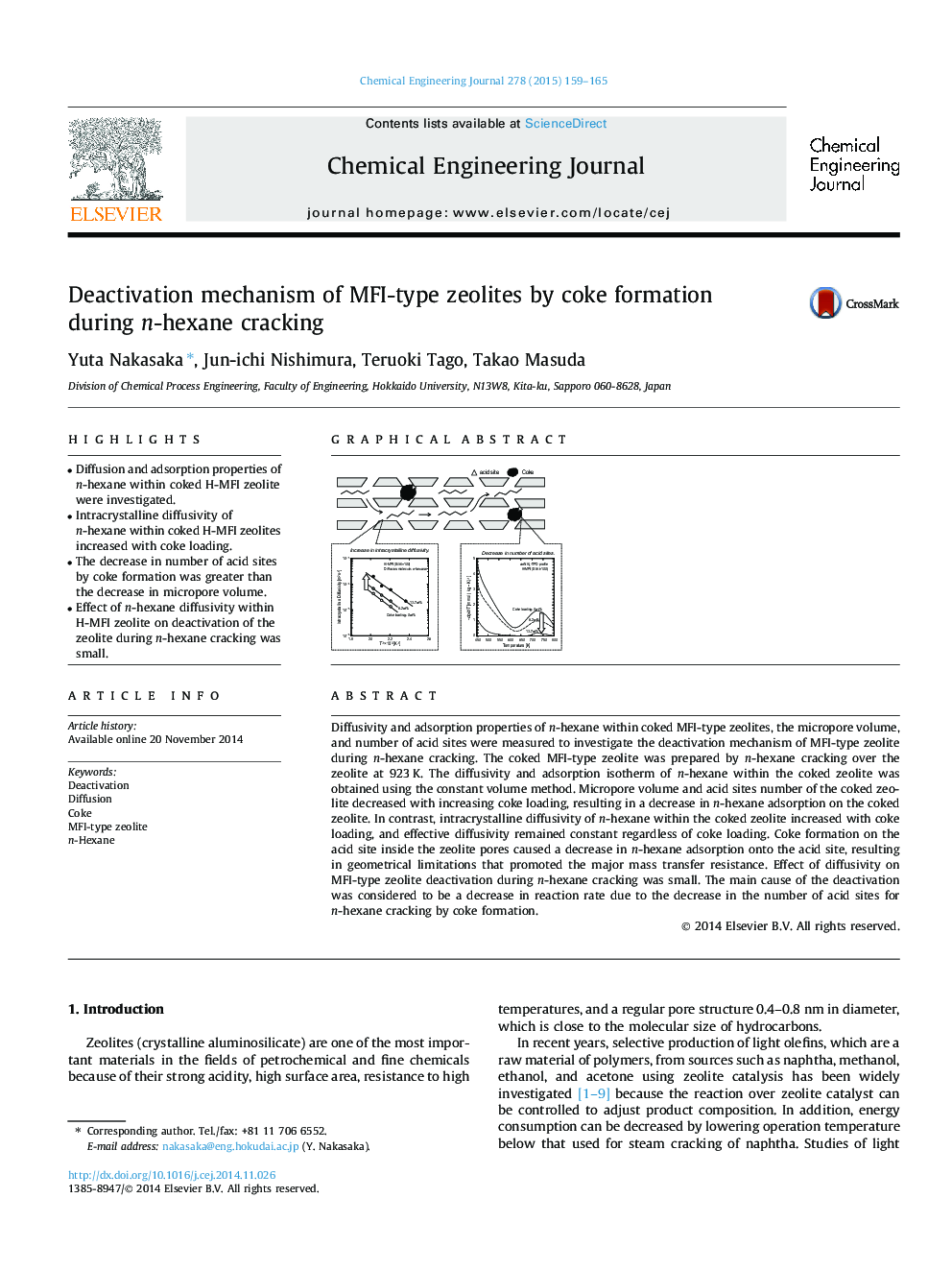| Article ID | Journal | Published Year | Pages | File Type |
|---|---|---|---|---|
| 146167 | Chemical Engineering Journal | 2015 | 7 Pages |
•Diffusion and adsorption properties of n-hexane within coked H-MFI zeolite were investigated.•Intracrystalline diffusivity of n-hexane within coked H-MFI zeolites increased with coke loading.•The decrease in number of acid sites by coke formation was greater than the decrease in micropore volume.•Effect of n-hexane diffusivity within H-MFI zeolite on deactivation of the zeolite during n-hexane cracking was small.
Diffusivity and adsorption properties of n-hexane within coked MFI-type zeolites, the micropore volume, and number of acid sites were measured to investigate the deactivation mechanism of MFI-type zeolite during n-hexane cracking. The coked MFI-type zeolite was prepared by n-hexane cracking over the zeolite at 923 K. The diffusivity and adsorption isotherm of n-hexane within the coked zeolite was obtained using the constant volume method. Micropore volume and acid sites number of the coked zeolite decreased with increasing coke loading, resulting in a decrease in n-hexane adsorption on the coked zeolite. In contrast, intracrystalline diffusivity of n-hexane within the coked zeolite increased with coke loading, and effective diffusivity remained constant regardless of coke loading. Coke formation on the acid site inside the zeolite pores caused a decrease in n-hexane adsorption onto the acid site, resulting in geometrical limitations that promoted the major mass transfer resistance. Effect of diffusivity on MFI-type zeolite deactivation during n-hexane cracking was small. The main cause of the deactivation was considered to be a decrease in reaction rate due to the decrease in the number of acid sites for n-hexane cracking by coke formation.
Graphical abstractFigure optionsDownload full-size imageDownload as PowerPoint slide
